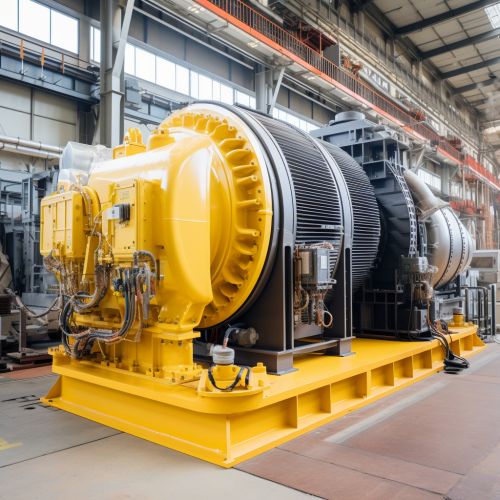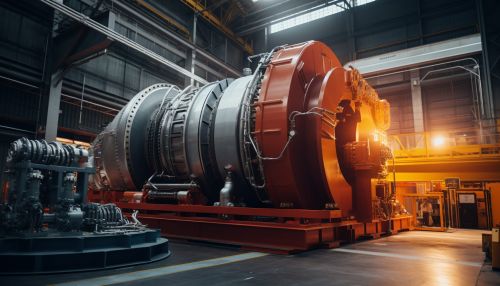Electric generator
Introduction
An electric generator is a device that converts mechanical energy to electrical energy. The process of converting mechanical energy into electricity is known as electromagnetic induction, which was discovered by Michael Faraday in 1831. Electric generators play a crucial role in power generation in power plants, where mechanical energy is converted into electrical energy.
Principle of Operation
The principle of operation of an electric generator is based on Faraday's laws of electromagnetic induction. According to these laws, an electromotive force (EMF) is induced in a conductor when it is subjected to a changing magnetic field. The induced EMF is directly proportional to the rate of change of the magnetic field. This principle is utilized in the operation of an electric generator.
Types of Electric Generators
There are two main types of electric generators: AC (Alternating Current) generators and DC (Direct Current) generators.
Alternating Current (AC) Generators
Alternating Current (AC) generators, also known as alternators, generate an output voltage that varies sinusoidally with time. The most common type of AC generator is the synchronous generator, which is used in most power plants. Synchronous generators operate at a constant speed (synchronous speed) and produce a constant frequency AC voltage.
Direct Current (DC) Generators
Direct Current (DC) generators produce a constant voltage output. These generators are commonly used in applications that require a stable and continuous power supply, such as battery charging and power supply for electronic devices.
Components of an Electric Generator
An electric generator consists of several key components, including the rotor, stator, bearings, and cooling system.
Rotor
The rotor is the rotating part of the generator that produces a magnetic field. The rotor is made up of a coil of wire (the armature) wound around an iron core. When the rotor is rotated, it creates a changing magnetic field that induces a voltage in the stator.
Stator
The stator is the stationary part of the generator that contains the conductors where the voltage is induced. The stator is made up of a series of coils (the windings) that are connected in a specific pattern to produce the desired voltage and current characteristics.
Bearings
Bearings are used to support the rotor and allow it to rotate smoothly and with minimal friction. There are two main types of bearings used in electric generators: ball bearings and sleeve bearings.
Cooling System
The cooling system is used to remove the heat generated in the generator during operation. There are several types of cooling systems used in electric generators, including air cooling, water cooling, and hydrogen cooling.
Electric Generator Efficiency
The efficiency of an electric generator is a measure of how effectively it converts mechanical energy into electrical energy. The efficiency of a generator can be improved by reducing mechanical losses (such as friction and windage), electrical losses (such as resistance and eddy current losses), and magnetic losses (such as hysteresis and eddy current losses).
Applications of Electric Generators
Electric generators are used in a wide range of applications, from small portable generators used for camping and outdoor activities, to large industrial generators used in power plants for electricity generation. Other applications of electric generators include emergency power supply systems, renewable energy systems (such as wind turbines and hydroelectric power plants), and in motor vehicles for charging the battery and powering the electrical system.


